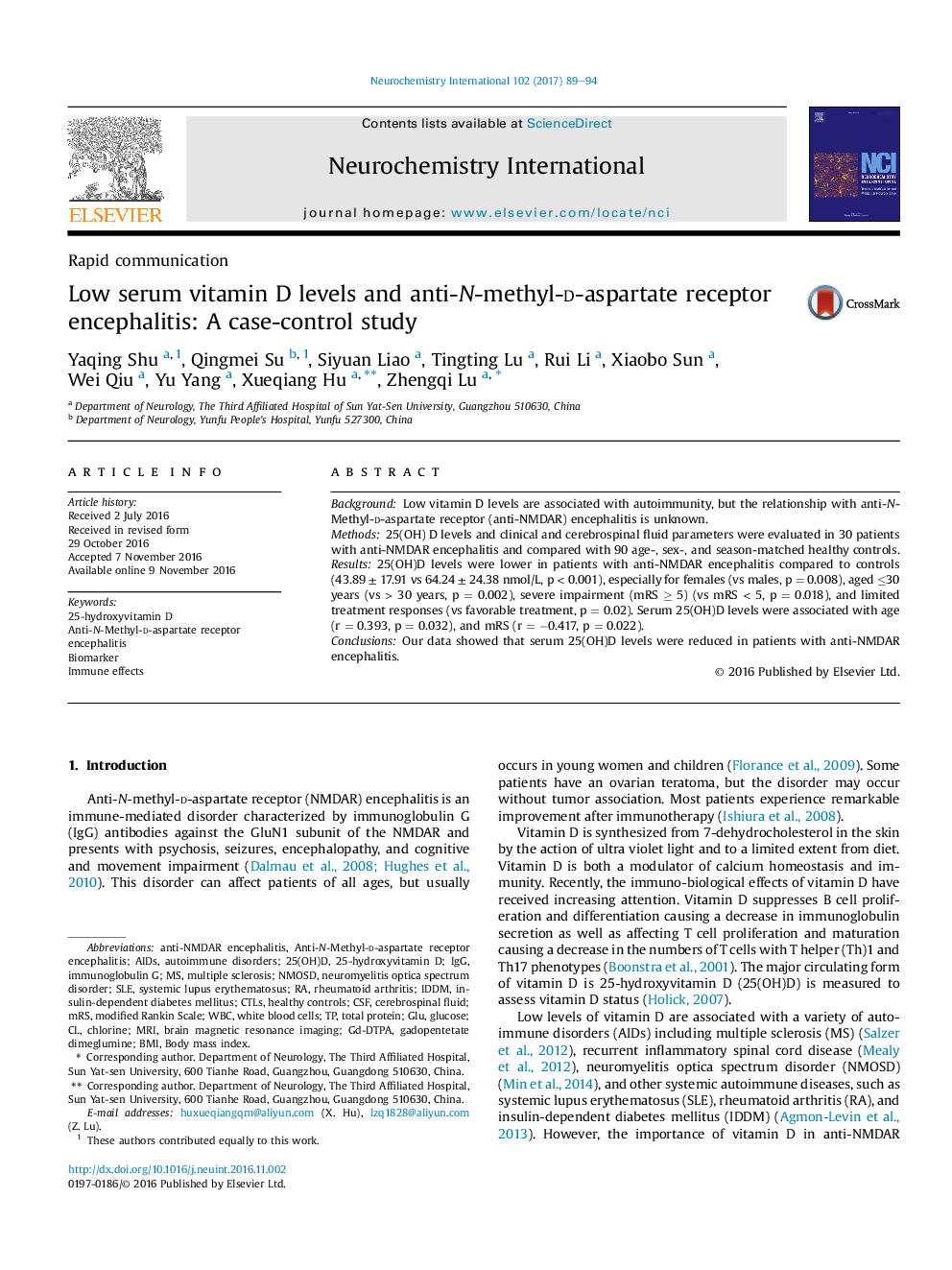| Article ID | Journal | Published Year | Pages | File Type |
|---|---|---|---|---|
| 5534622 | Neurochemistry International | 2017 | 6 Pages |
â¢Serum 25(OH)D levels were reduced in anti-NMDAR encephalitis patients.â¢25(OH)D levels were lower in female subgroup than that in male subgroup.â¢25(OH)D levels were lower in severe impairment subgroup than that in mild symptoms subgroup.â¢25(OH)D levels were lower in those with limited treatment than those with favorable treatment.â¢Serum 25(OH)D levels were significantly associated with age, disease severity.
BackgroundLow vitamin D levels are associated with autoimmunity, but the relationship with anti-N-Methyl-d-aspartate receptor (anti-NMDAR) encephalitis is unknown.Methods25(OH) D levels and clinical and cerebrospinal fluid parameters were evaluated in 30 patients with anti-NMDAR encephalitis and compared with 90 age-, sex-, and season-matched healthy controls.Results25(OH)D levels were lower in patients with anti-NMDAR encephalitis compared to controls (43.89 ± 17.91 vs 64.24 ± 24.38 nmol/L, p < 0.001), especially for females (vs males, p = 0.008), aged â¤30 years (vs > 30 years, p = 0.002), severe impairment (mRS â¥Â 5) (vs mRS < 5, p = 0.018), and limited treatment responses (vs favorable treatment, p = 0.02). Serum 25(OH)D levels were associated with age (r = 0.393, p = 0.032), and mRS (r = â0.417, p = 0.022).ConclusionsOur data showed that serum 25(OH)D levels were reduced in patients with anti-NMDAR encephalitis.
